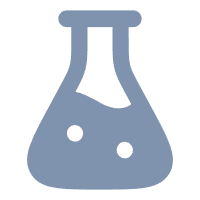OENRC3
Regulatory biopart collection
Collection Name
La Fleur et al(2022)
Biopart Type
promoter
Brief Description
Transcription rates are regulated by the interactions between RNA polymerase, sigma factor, and promoter DNA sequences in bacteria. However, it remains unclear how non-canonical sequence motifs collectively control transcription rates. Here, we combine massively parallel assays, biophysics, and machine learning to develop a 346-parameter model that predicts site-specific transcription initiation rates for any σ70 promoter sequence, validated across 22132 bacterial promoters with diverse sequences. We apply the model to predict genetic context effects, design σ70 promoters with desired transcription rates, and identify undesired promoters inside engineered genetic systems. The model provides a biophysical basis for understanding gene regulation in natural genetic systems and precise transcriptional control for engineering synthetic genetic systems.
Chassis
E. coli
Culture Condition
Replicate in vitro transcription reactions were carried out for 3 h at37 °C, combining 1 ug of the expression plasmid library, 0.5 mM ofeach NTP, 1X E. coli RNA Polymerase Reaction Buffer, and 1 uL of E. coliRNA Polymerase Holoenzyme (NEB). DNA was removed by adding 2.5units of TURBO DNase and incubating at 37 °C for 30 min. The RNAproduct was purified using a RNA Clean & Concentrator Kit (Zymo).
Qualification method
For quantification of RNA variant levels after transcription (RNASeq), cDNA first-strand synthesis reactions were first carried out on theharvested RNA, using 200 units of SuperScript IV (Invitrogen), 1Xbuffer, and transcript-specific primer 2 (Supplementary Table 3). PCRwas carried out to generate barcode-containing amplicons (121 bp),using 5 ng of cDNA as template, primers 2 and 3, and 25 cycles ofamplification (Supplementary Table 3), followed by next-generationsequencing (Illumina HiSeq 2500, 150 bp paired-end), barcode mapping, and barcode counting. For quantification of DNA variant levels inthe expression plasmid library (DNA-Seq), PCR was first carried out on10 ng of the expression plasmid library to generate promoter-barcodeamplicons (847 bp long), using primers 1 and 2 and 25 cycles ofamplification. The promoter-barcode regions were then condensedinto shorter amplicons (271 bp) by treating the PCR product with T4Polynucleotide Kinase (NEB), carrying out DNA circularization byligation using T4 DNA Ligase (NEB), purifying the monomer DNA circles via gel extraction, and then PCR amplifying using primers 3 and 4with 25 cycles (Supplementary Table 3). The promoter-barcodeamplicon library was sequenced using Illumina HiSeq 2500 (150 bp,paired-end), followed by barcode mapping, promoter identification,and counting. Three independent in vitro transcription reactions, RNASeq, and DNA-Seq assays were carried out.
Reference
PMID:36056029 (LaFleur TL, Hossain A, Salis HM. Automated model-predictive design of synthetic promoters to control transcriptional profiles in bacteria. Nat Commun. 2022 Sep 2;13(1):5159. doi: 10.1038/s41467-022-32829-5. PMID: 36056029; PMCID: PMC9440211.)
Submitter
Biocuration
Functions
Sequence


 Related
Related